With tips on avoiding the crowds, the best time to take photographs and a rant about the entrance fee
Avoiding the crowds at the Acropolis is not rocket science: you just need to arrive soon after it opens at 8 am when most independent travellers haven’t yet jumped into action and the tour groups are still tucking into their hotel buffet breakfast (lucky them!). But steering clear of the mass of scaffolding and other such building material that seems to be a permanent fixture on the structure these days is much trickier to achieve.

In fact, it is nigh on impossible to avoid it but the huge crane that dominates the western side of the Parthenon (the most recognisable part of the Acropolis) and semi-permanent work’s site nearby would suggest that the bulk of the renovation work is happening on the western and southern side of the building for the foreseeable future (we visited in late March 2017). This means that another plus of visiting in the morning is that at least you can photograph the eastern colonnades of the Parthenon, which are currently free of scaffold, in good light and with the sun behind you. But that’s about as good as it gets photography-wise. Come in the afternoon and the sun will be in the wrong position for photographing this part of the Parthenon and what you will be looking at instead, in terms of decent light-wise, is a very crowded and scaffold-covered/crane-dominated set of western colonnades.
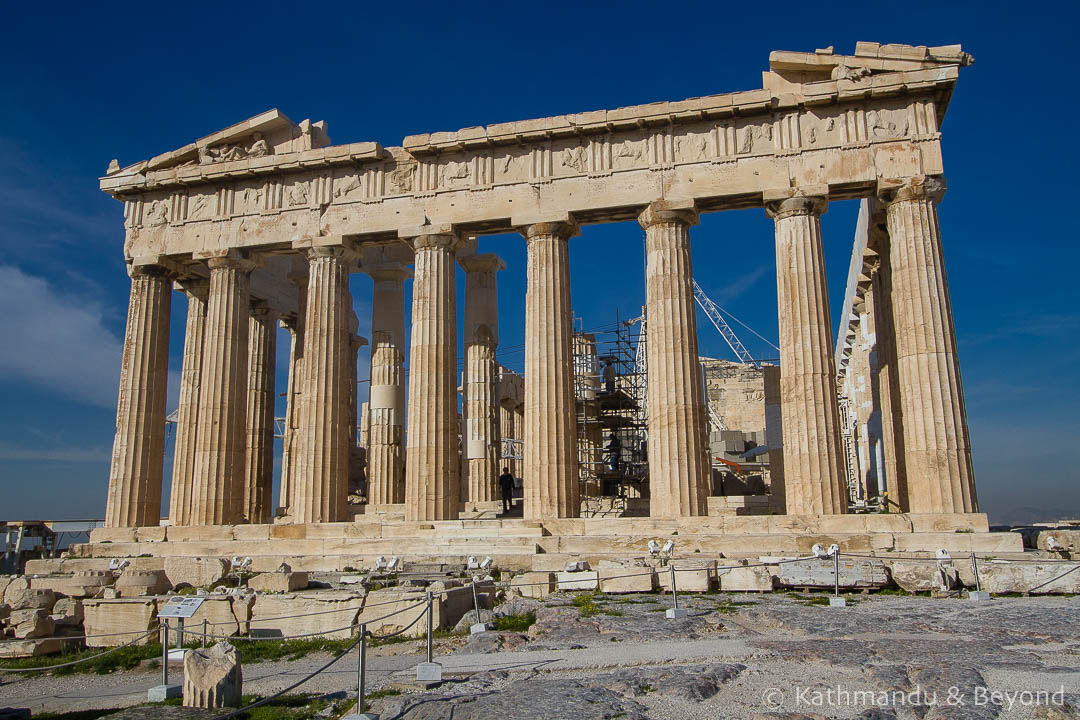
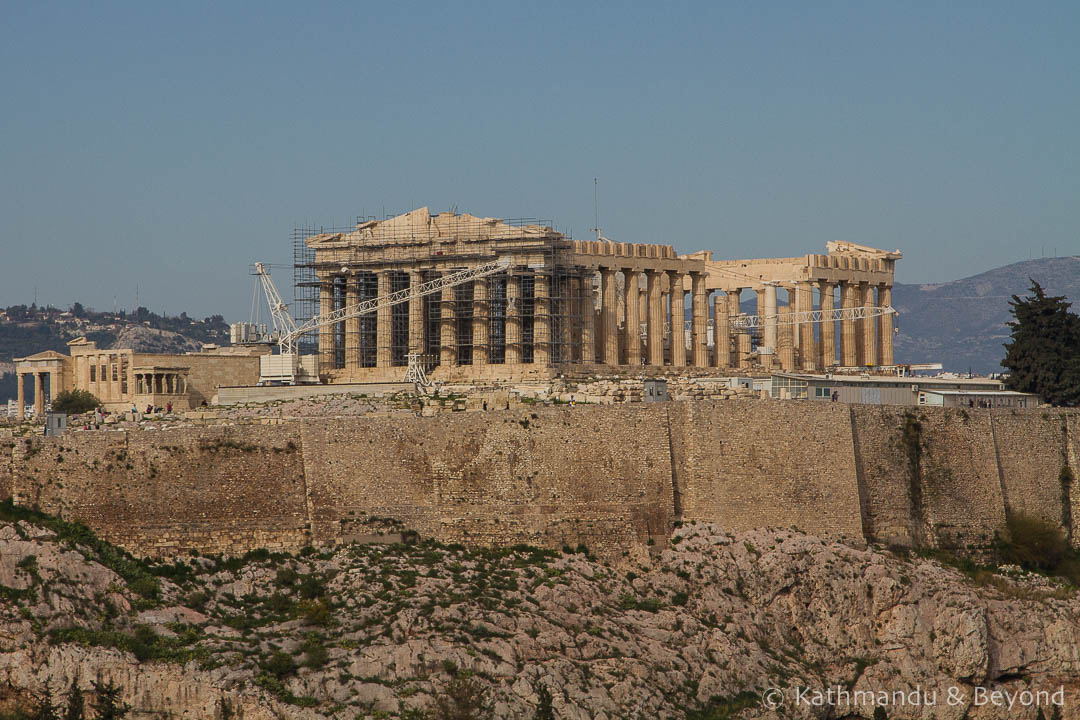
The entrance fee for Acropolis was reduced to half price from 1st November 2016 to the 31st March 2017 (€10 versus €20), an initiative introduced by the government to attract more visitors after they increased the entrances fees quite significantly for all government-managed sites and museums the year prior. €10 is still a hefty ticket price in our opinion and €20 is taking the piss somewhat, given that a substantial area of the Acropolis resembles a building site.
We understand that ongoing renovation work at important archaeological sites such as the Acropolis is essential. We’ve been to plenty of ancient cities (Angkor, Bagan, Ephesus, etc.) where restoration work has been taking place during our visit but it has been restricted to specific areas and never felt like it was that dominating. This is the first site of such magnitude that we have walked around and got the impression that the entire place was being restored around us. Of course, not all of the Acropolis is under restoration but it felt like it at the time because of the state of the Parthenon. It’s the most dominating structure within the Acropolis and you can’t help but focus on it. For us it raised the question; why can’t the people in charge work on a smallish area at any one time and then move onto another section once the one they are currently working on is complete? It’s a bit like motorway (highway, freeway, whatever you like to call it) maintenance in my opinion – why do the powers-that-be need to close an entire lane in order to work on half a mile of road?
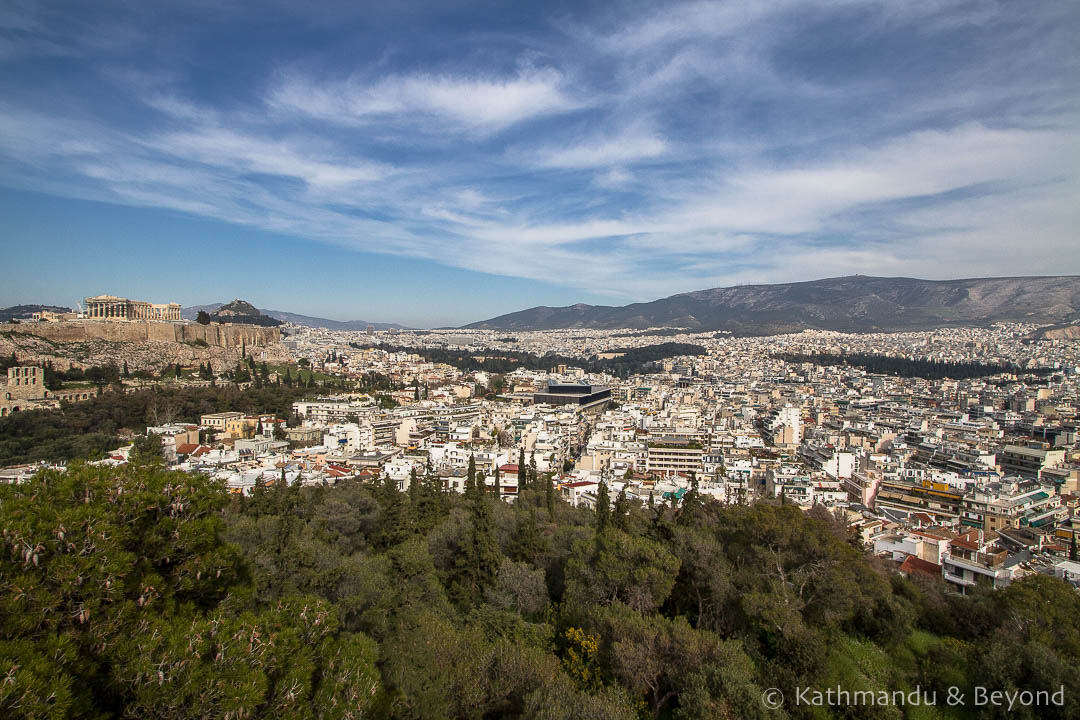
I’m sure there plenty of experts out there who can give me a plausible explanation as to why the renovation work needs to be so large scale (and take so long, it started in 1975!) but I wonder if any of those involved in the restoration project for the Acropolis have considered tourists in the grand scheme of things and the disappointment they will invariably incur (not to mention the hefty entrance fee) when they first clap eyes on the Holy Rock?
This large-scale renovation coupled with the crowds (who did arrive about an hour or so later) and the high entrance fee meant we weren’t that impressed with the Acropolis. I’ve visited the site four times now. The first was on a school trip and the second was during my early days of backpacking around Europe so my memory is a little hazy but I definitely remember there being scaffolding on the Parthenon and other parts of the Acropolis during my third visit and that was at least fifteen years ago. As one of our friends pointed out on Facebook when we lamented about the topic;
There was scaffolding when I was there over 2 yrs ago!! Not sure it will ever be finished::)).
It’s not all doom and gloom when it comes to Athen’s archaeological wonders, however. The rest of the ancient sites we visited in the city were blissfully free of renovation works plus, to boot, they had distinctly fewer tourists at them. I didn’t spot any ongoing renovation at the impressive Ancient Agora, nor at Hadrian’s Library or the sprawling Keramikos and I only saw the tiniest section of scaffolding within the colonnades of the Temple of Olympian Zeus. Even the monuments on the south slope of the Acropolis (namely the Odeon of Herodes Atticus and the Theatre of Dionysus) were reasonably scaffold-free and thankfully the famous Porch of the Caryatids, part of the sacred Erechtheion within the Acropolis itself, was looking very snazzy indeed!
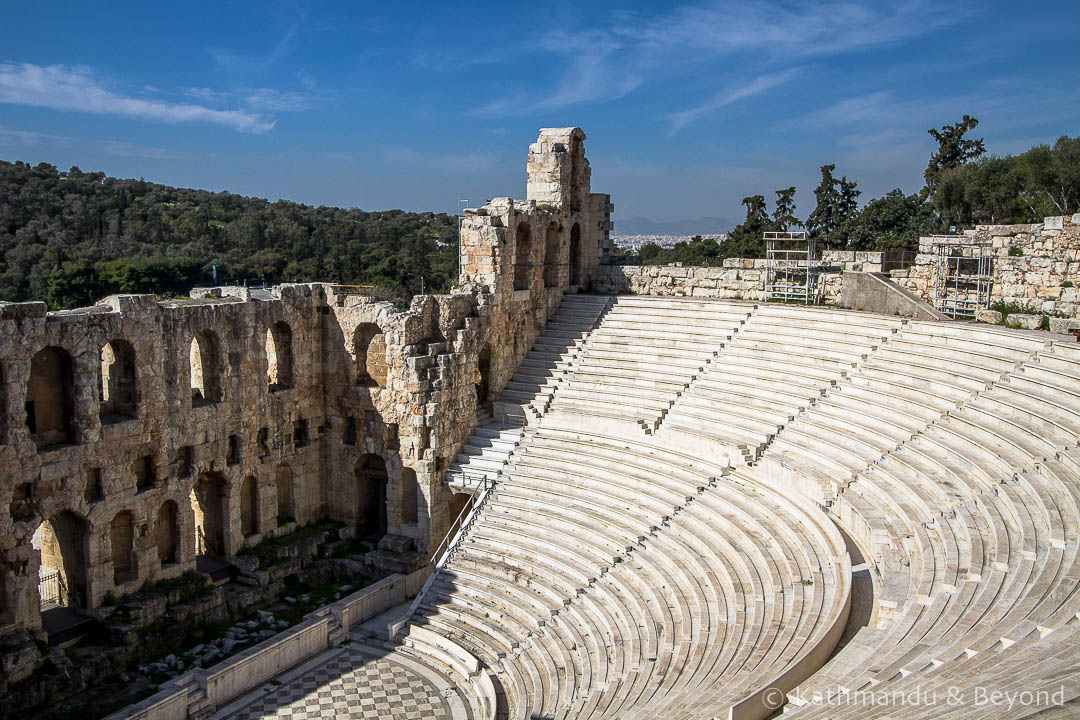
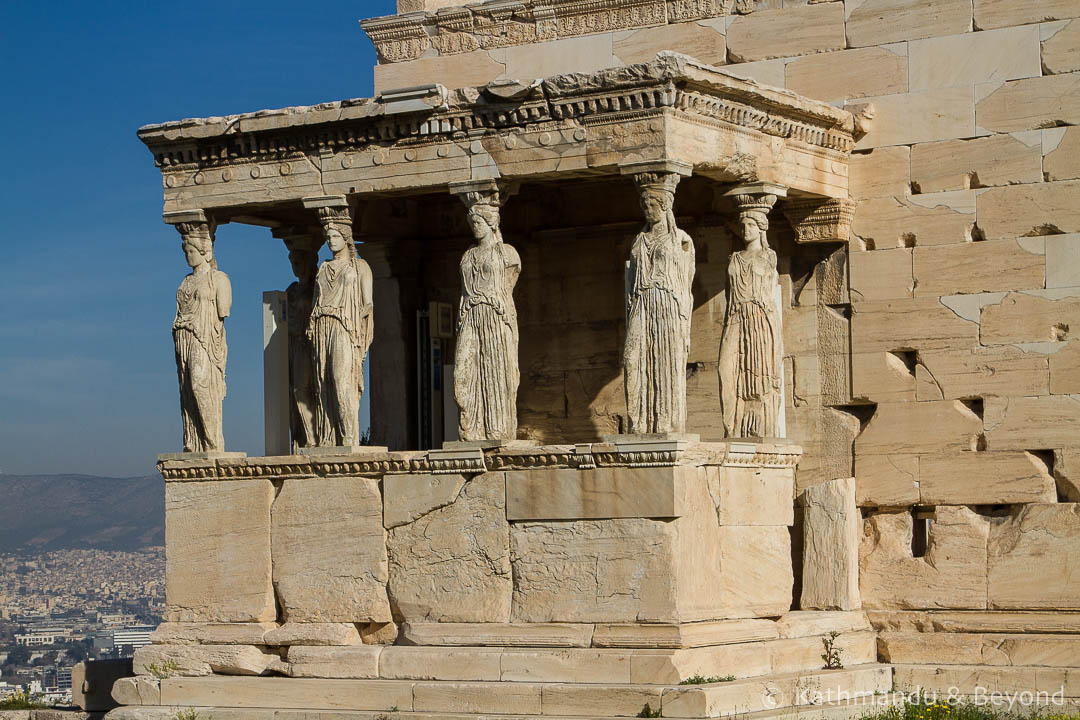
Don’t let the restoration work put you off visiting Athens, it’s a nice city with plenty to do, but I would suggest lowering your expectations if you do decide to shell out €10 or €20 (depending on when you visit) in order to see the Acropolis close up and make sure you visit early in the morning if you want to take some decent photos and avoid the hordes as much as possible. And just in case you don’t believe me, here are some scaffold-free photos of Athen’s other ancient sites.
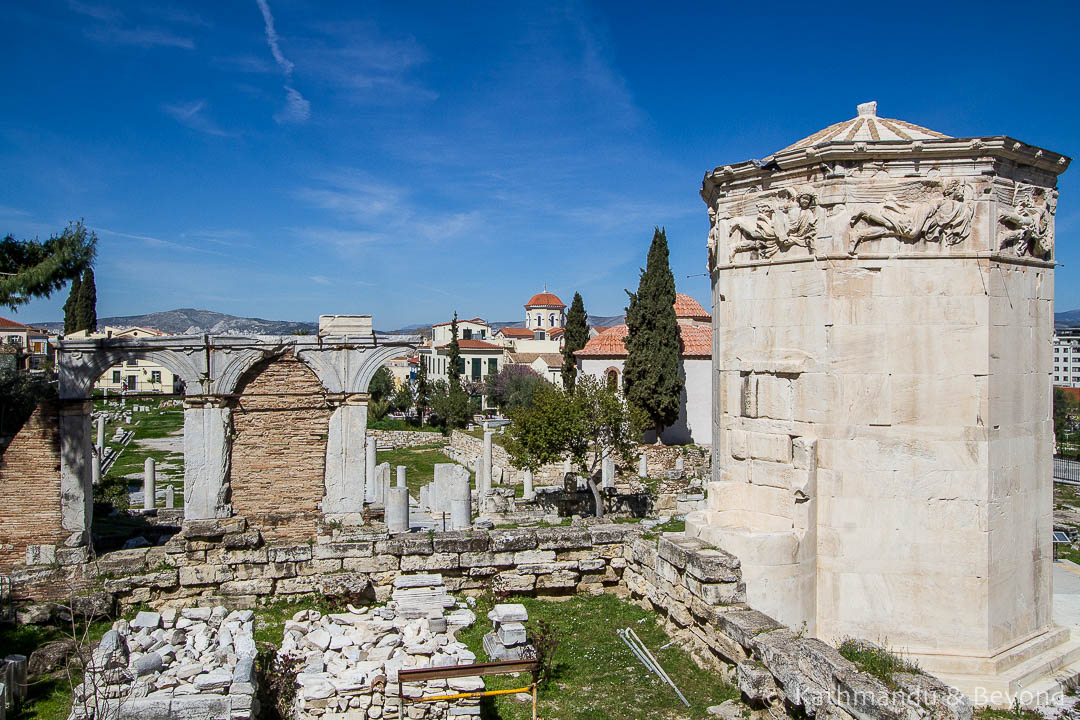
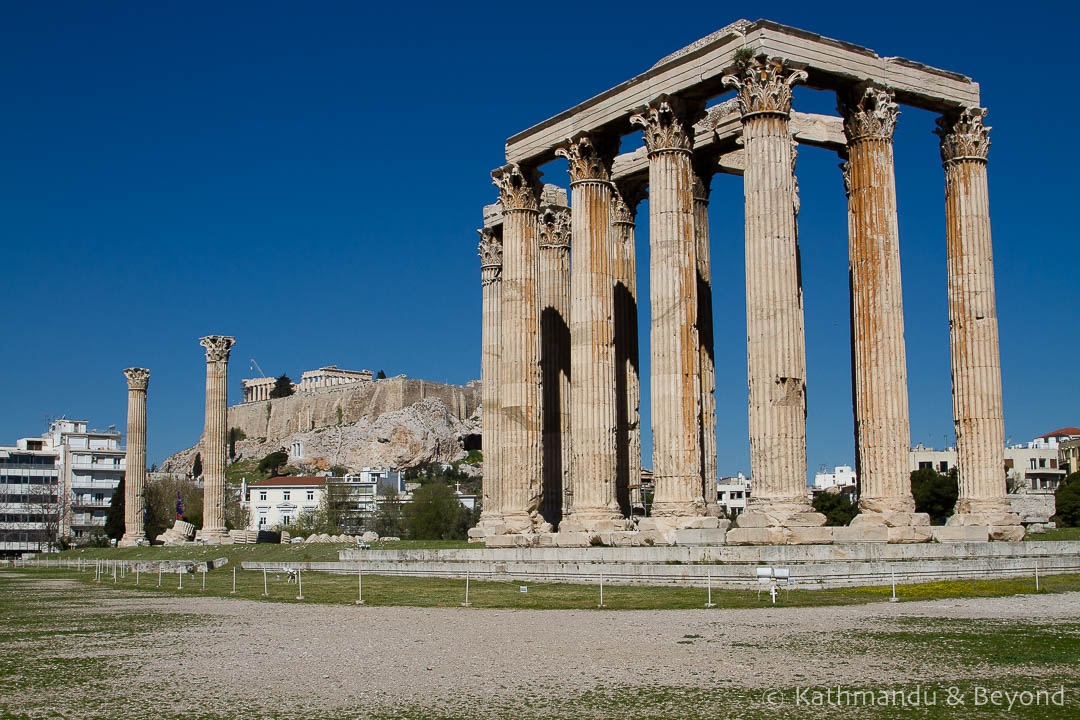
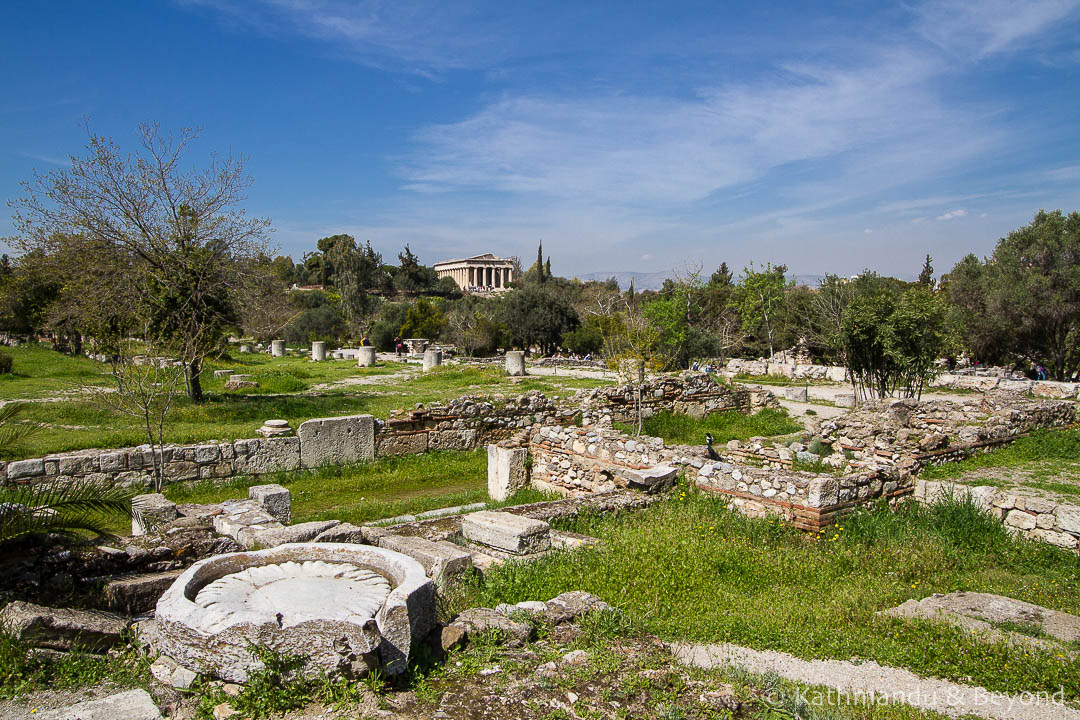
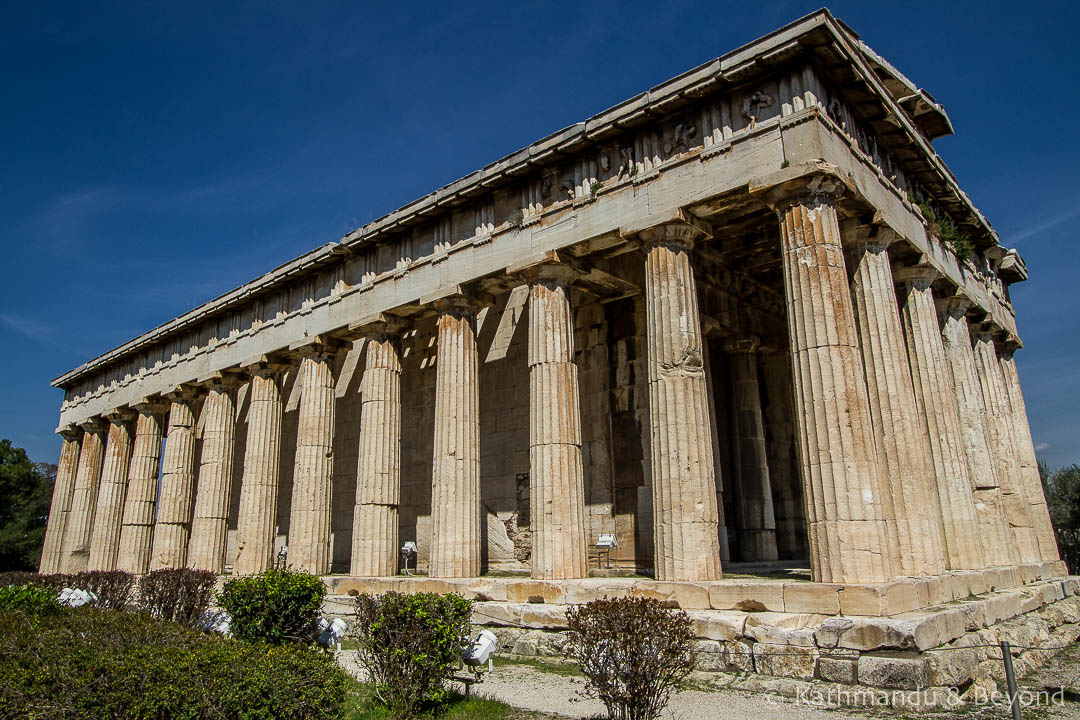
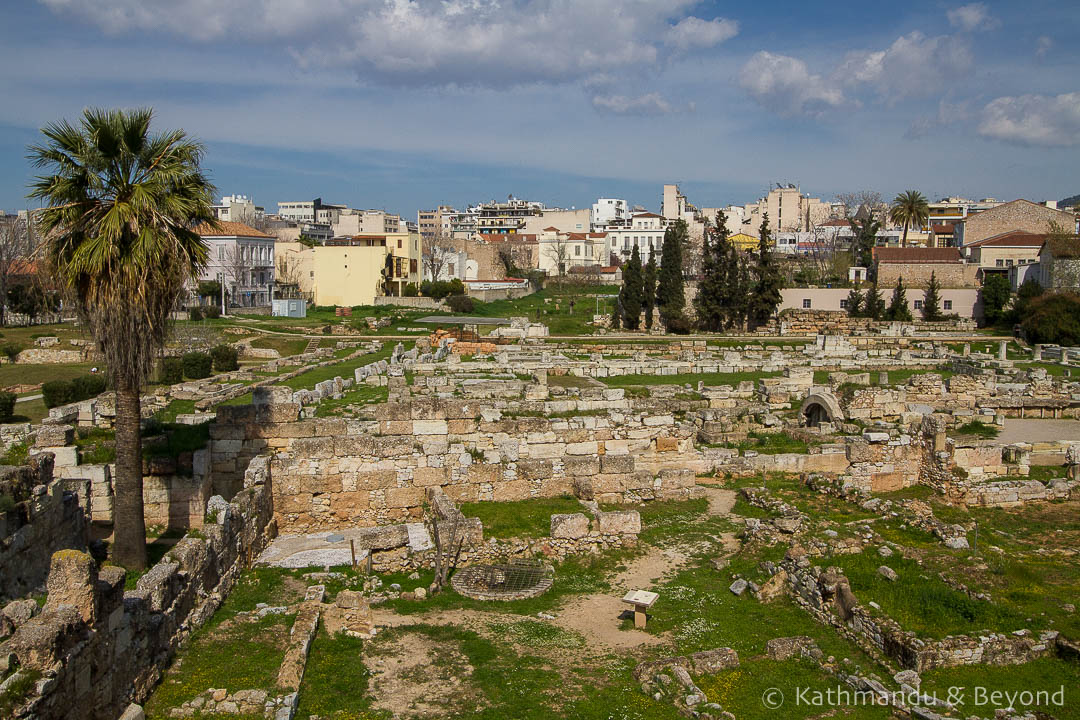
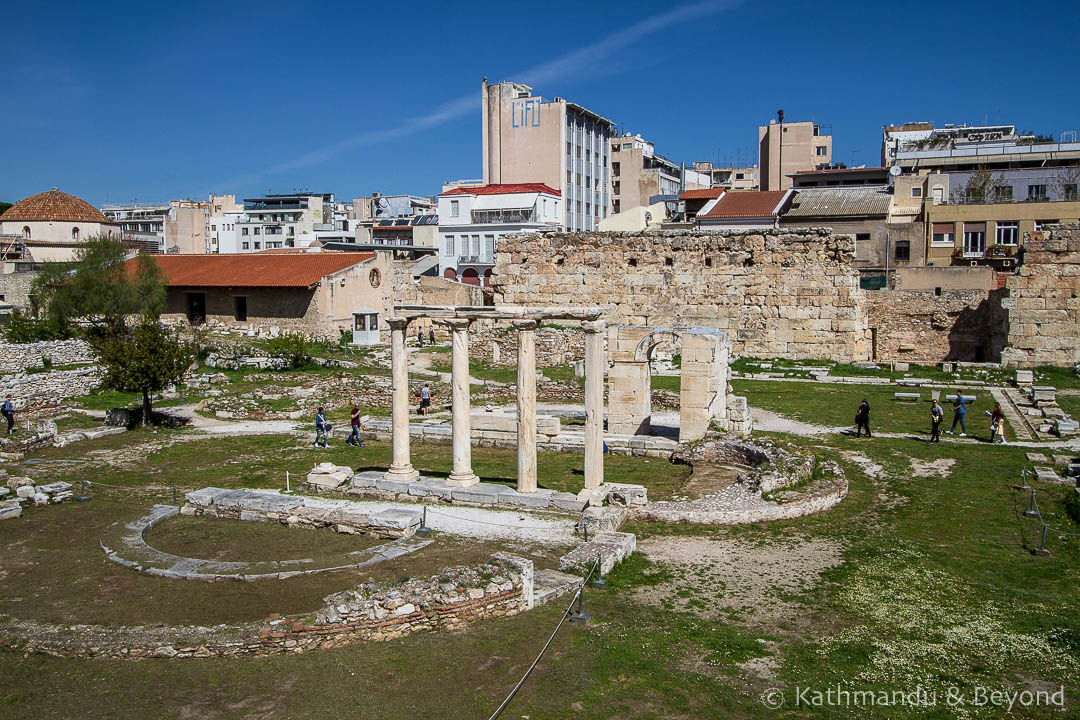
And one final suggestion … if you do want a picture of a scaffold-free (or virtually scaffold-free) Acropolis then buy a postcard from one of the nearby tourist shops. These said shops are still selling postcards of the Acropolis circa 1975 or possibly earlier! Here’s a couple I bought in 1989!
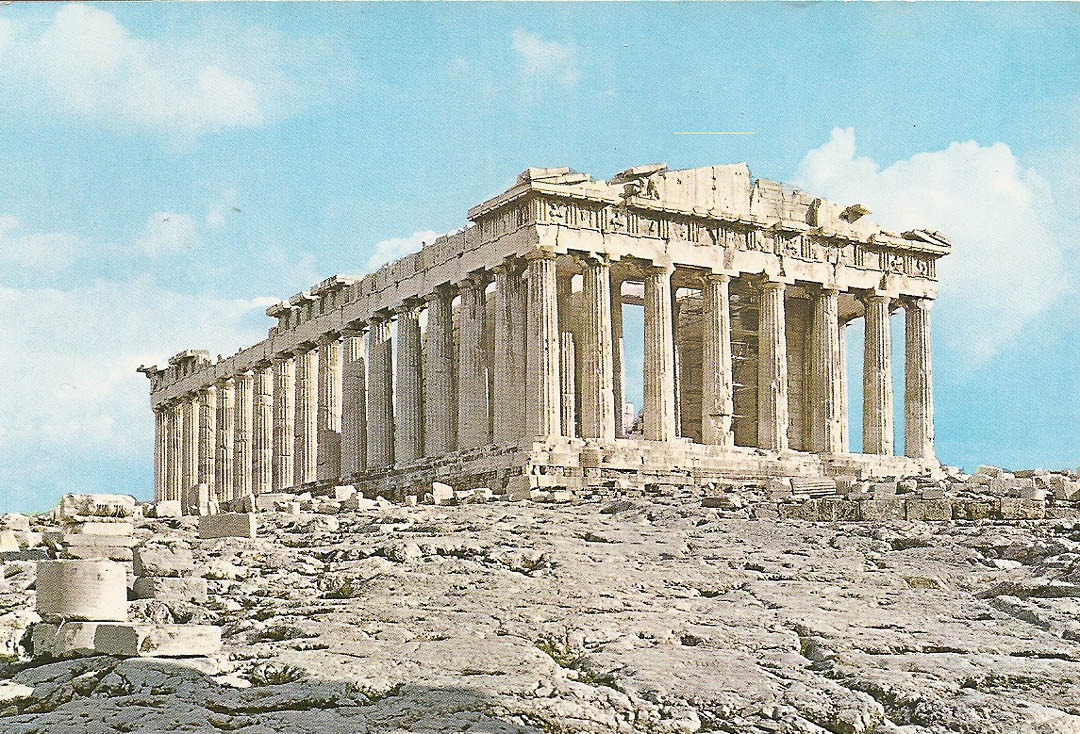
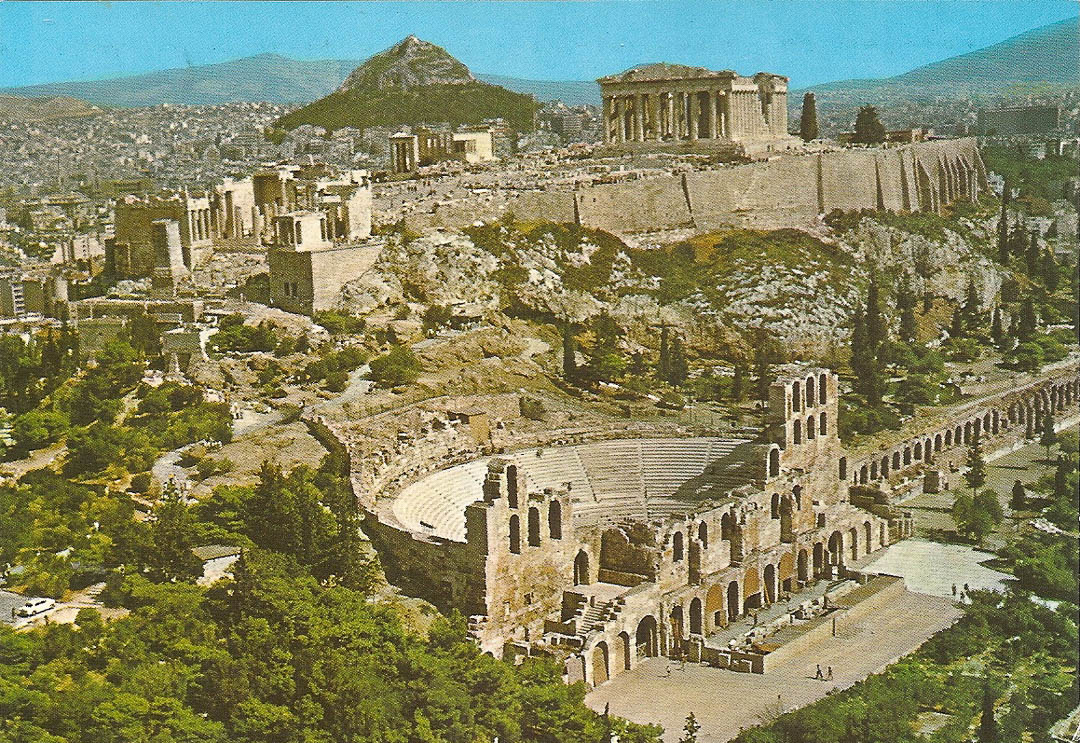

Just so you don’t feel too bad about all the scaffolding on the Acropolis, we recently visited the small island in Lake Bled, Slovenia and the Church of the Mother of God, the only reason to visit the island, was also covered with all sorts of scaffolding and plastic sheeting. If I could post a photograph in this comment, I would show you! Ben
Hopefully I’ve managed to upload the image you emailed here…
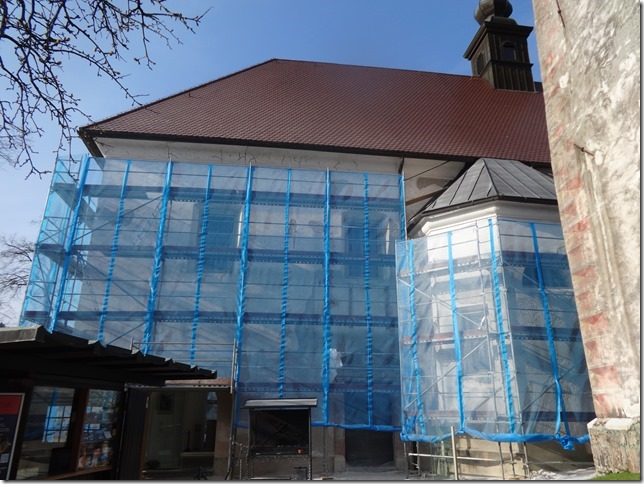
Ugh, we’d be so mad! We both get really grumpy when we turn up to see a site or attraction and it’s covered in scaffold and/or tarpaulin. What’s worse, is when there is a hefty entrance fee and then you can’t see what you’ve paid your money for. There should be a reduced “under renovation” price. Although the authorities are probably banking on the entrance fees to pay for the works!
We were kind of expecting it with the Acropolis but even so…
This is good photography advice. I think those scaffolding might be there for a good many years more. They were there when I visited in 1998 and 2008. I sort of assumed they were part of something necessary to support the aged structure.
Yes, we have to agree with you – I think scaffolding in one shape or form or in one part of it or another is probably a permanent feature. If they ever remove it all it probably means they have rebuilt the entire thing! 😉
What is the more beautiful building, do you think, the Parthenon or the Taj Mahal, or maybe another contestant? The last time I was in Athens I was surprised at how big the Parthenon is.
Now, that’s a good question – I wouldn’t go for either but I’m not sure what I would go for. Can I have some concrete – the Barbican in London may be?? It’s a good topic to debate over a couple of pints in a bar so Kirsty and I will do exactly that and get back to you? What is your preference???
Of course, something with lots of concrete! The Parthenon and the Taj Mahal fail miserably. I’m not as fond of concrete, and I’m not sure if I’ve ever seen any other buildings as beautiful as the Parthenon and the Taj Majal. I don’t have a preference between the two.
Fair enough! I’ve been thinking more about it and reckon some of the mosques I have seen (such as the Selimiye Mosque in Edirne for example) might top the list. I also think the Lavra in Kiev would be high up there. I’m considering a blog post along these lines …
Hi Kirsty. I’m with you – I was a bit underwhelmed by the Acropolis (the crowds, even in very late October; the amount of scaffolding). Then I felt a tad guilty for decrying such an incredible monument. In honesty, though, I enjoyed the Acropolis Museum far more. Loads of fabulous artefacts and statues, no scaffolding 🙂 And the rest of Athens was an unexpected joy.
Indeed, I hope I got across that it was only the Acropolis that disappointed us – as you say, the rest of Athens exceeded expectations. We spent a week there and probably need another week some time in the future to see some of the things we didn’t see first time around. We ran out of time when it came to museums so that’s one reason alone to go back!
Thanks for sharing an evil frustration I have encountered many times … scaffolding. Obviously, these magnificent monuments must be maintained, but sometimes there does not seem any logic to the restoration project. One, projects that seems to last for years, like the Acropolis. Two, I was in Bagan recently, virtually every large temple was covered by scaffolding, yet there were literally no construction crews making improvements. Three, scaffolding, which does not blend in. Those overseeing the monuments have the opportunity to choose scaffolding which matches and blends in compared to choosing a color or style which does not.
I agree Ric, it’s the pain and a big disappointment – especially with the places you have to pay a reasonable amount to enter. I understand the use of scaffolding if it is to prevent something from actually falling down but this is rare and never get why they have to work on such a large area at once! Painting scaffolding would work!!!
I understand the pain. Unfortunately, I don’t get around much but the one big trip I’ve ever made was to Washington DC in 1998 and the Washington Monument was covered in scaffolding.
It’s extremely annoying but ultimately there isn’t a lot that can be done about it!